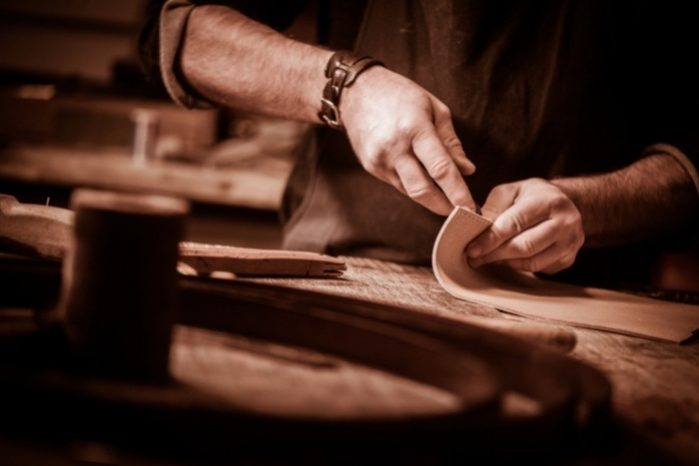All About Leather
How Do They Make Leather?
Although the finished product looks smooth and effortlessly put together, it actually takes time and expert precision to make leather items. Leather craftsmen use a complicated technical process that has to be followed to the tee. Otherwise, the leather items won’t come out looking the same.
At the beginning of the process is a piece of animal hide, and at the end, it becomes a leather product like a belt, wallet, purse etc. But what comes in between these two? How do they make leather ? Let’s try to answer the question as simply as possible.
[RELEVANT: What Is Leather Made Out Of?]
How is Leather Made?
You can get the leather material out of a myriad of different animal hides, like from cows to pigs and even goats. However, cowhide is the most widely utilized out of these options. It’s typically sourced from meat and dairy farmers who would otherwise throw it away. At least that’s the way it goes in Italy, where our leather bags come from.
Instead, it gets processed to create a valuable and durable product that will go on to benefit someone’s life for a very long time to come.
Not Same Quality

Now, the quality of the hide isn’t always the same and depends on a number of different factors within the animal’s upbringing. For example, if the animal suffers a lot of insect bites or goes through branding and/ or electric prodding, their hide will most likely only yield about 60% leather.
However, a healthy cow that’s enjoyed proper nutrition and a free-range existence without exposure to barbed wire fences, insects and electric prodding, will yield up to 90% leather material.
The hide is removed from the animal after slaughter. Then a fleshing machine is used to remove the remaining flesh. After this, you should have a clean blank surface to work with.
Treating Of The Hide
Now the leather making process starts with treating of the hide with salt brine. Usually, a generous amount of salt is poured onto the hide to prevent it from decomposing. During the soaking process, the hide needs to be folded with the flesh on the inner part of the fold.
The hide will be stored and left in the brine to for some time to remove any impurities that may be present. After, it will be taken out to remove any hair that is left using a calcium oxide solution.
Thanks to all the soaking, the hide will have doubled in size at this point. It means that it’s ready to get cut up into different pieces. The process will start by separating the top layer first. The top layer will be put aside for the more premium leather products that require more durability.
The bottom layer that’s left will then be utilized to make less demanding products like shoes, wallets, and handbags.
Tanning
The following stage is the tanning process. It involves transforming the hide into leather while stopping all decomposition to ensure long-term preservation.
This is done by placing the leather inside what is known as a “tanning drum”. It contains a natural tanning solution that has been prepared expressly for this purpose.
Re-Tanning
The re-tanning process is done to make sure that the leather material is absolutely ready for use. After the leather has been re-tanned with a solution of chromium salts and/or vegetable mix, it will be ready for vacuum or air drying before moving onto the next stage.
Dyeing
The dye that’s applied to the leather at this point is what’s responsible for the material’s superb color. It’s interesting to note that these days the leather dyeing process has gotten so advanced that the dye is perfected through a specific computer program.
Finishing

To finish off, the leather will get lubricated then stretched with a stacker machine to get a nice and supple texture.
How Do They Make Leather
So there you have it. A simple and clear guide of how to they make leather. The process is in fact difficult and prolonged. However, the end result puts the smiles on anyone’s face who enjoys a true leather product. Whether it’s furniture, shoes or bags, real thing is always better than fake one.
Hope you enjoyed the read. Join our family by subscribing to our newsletter and follow us on Instagram and Facebook!

